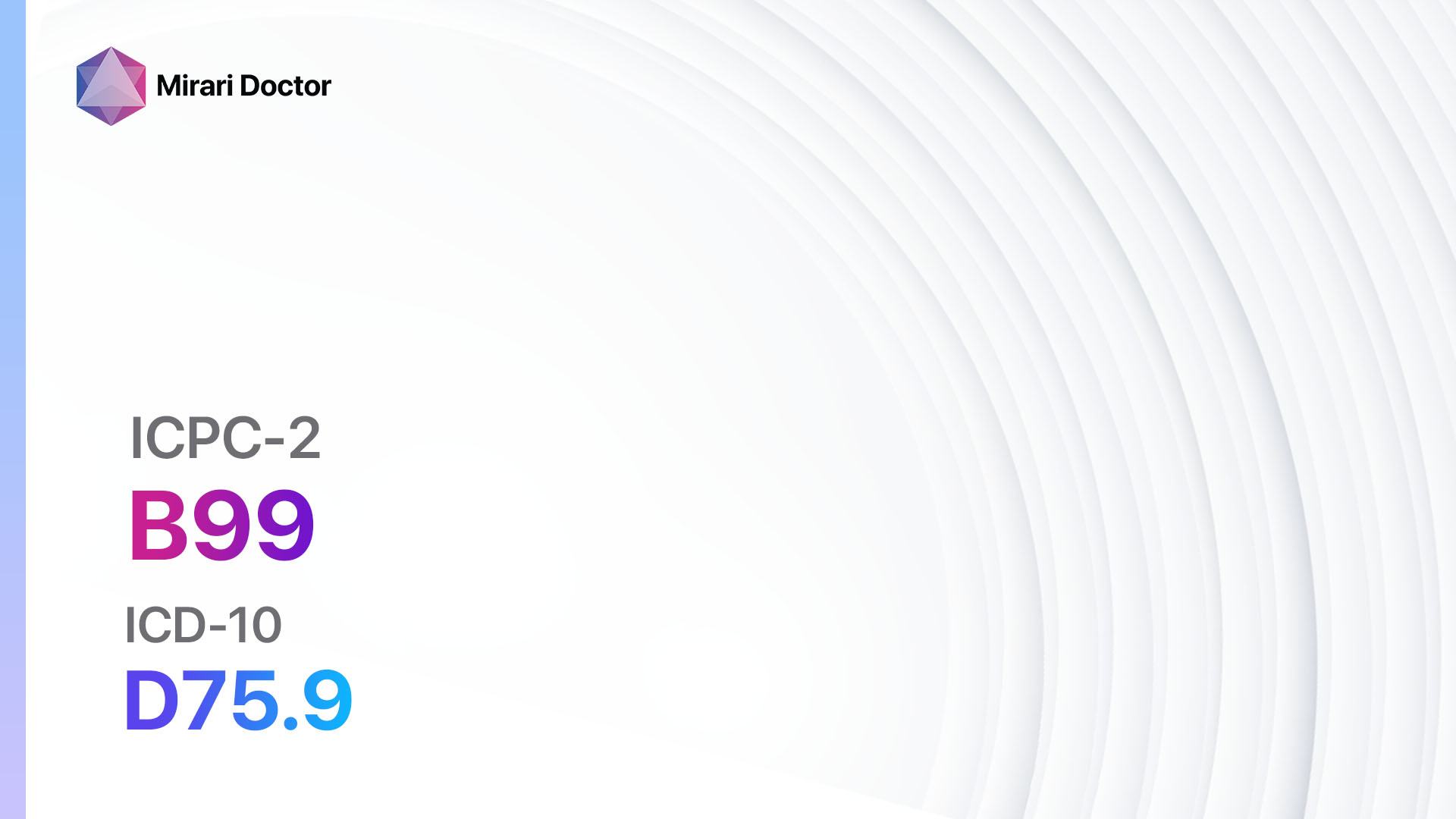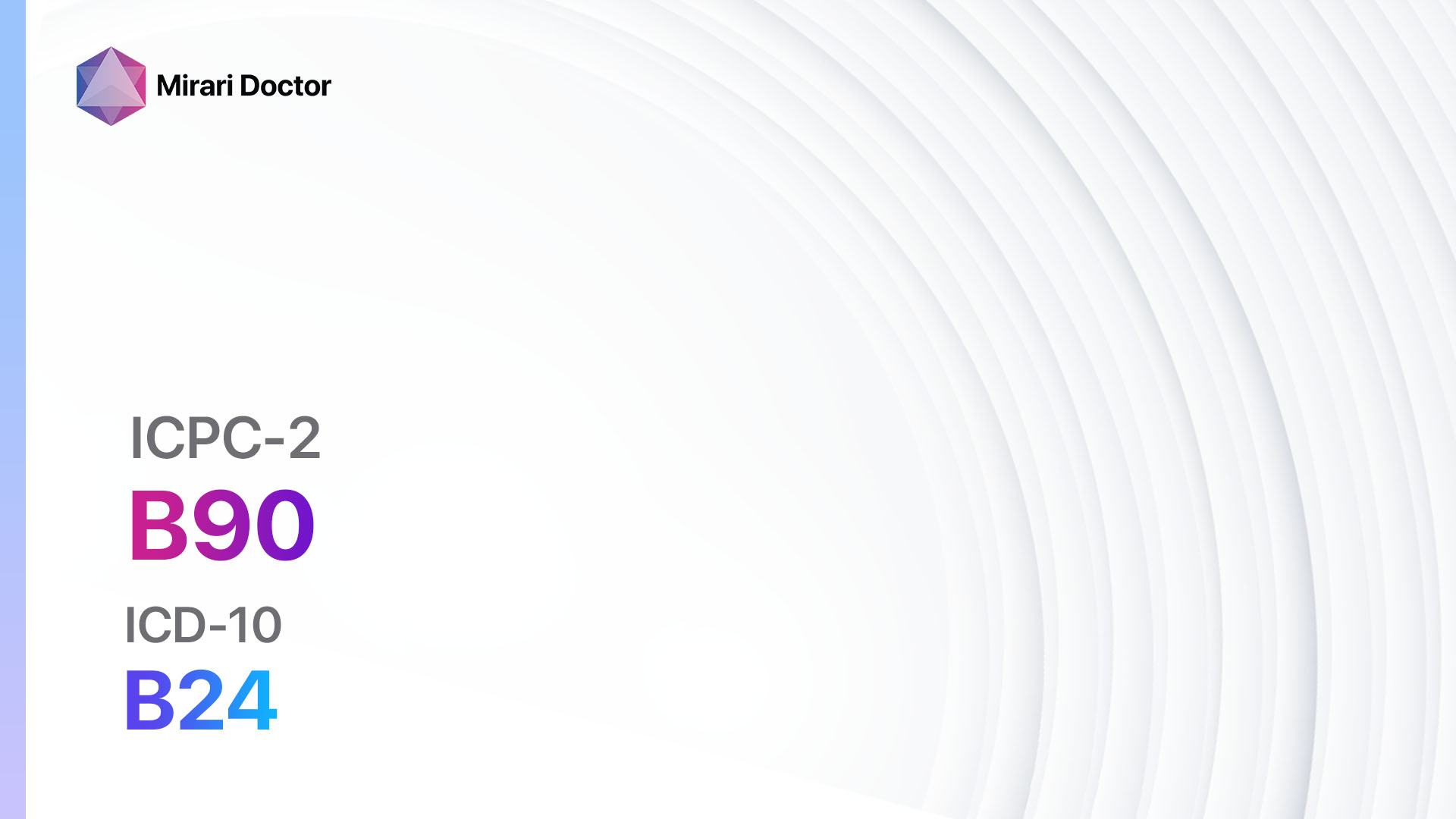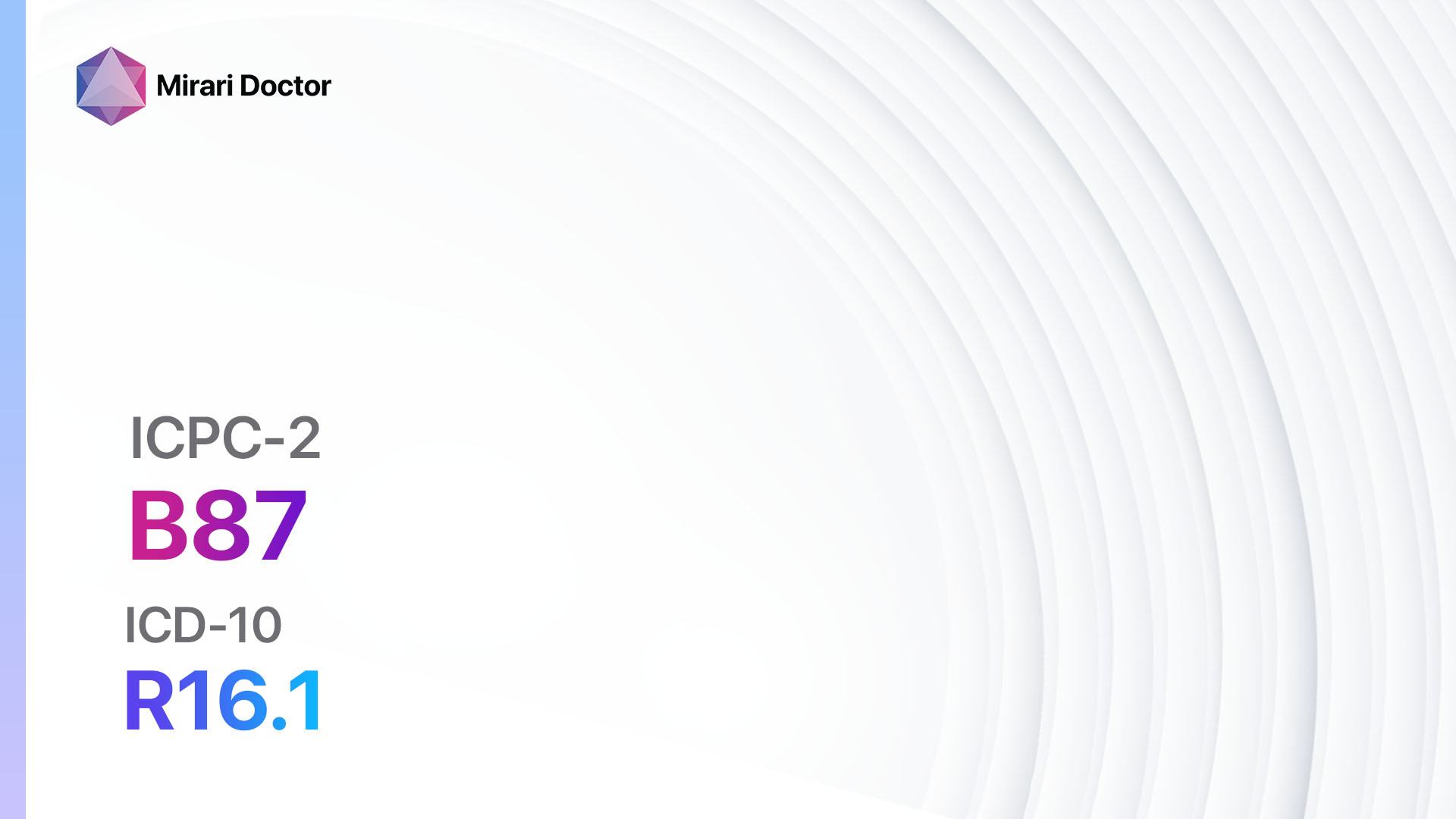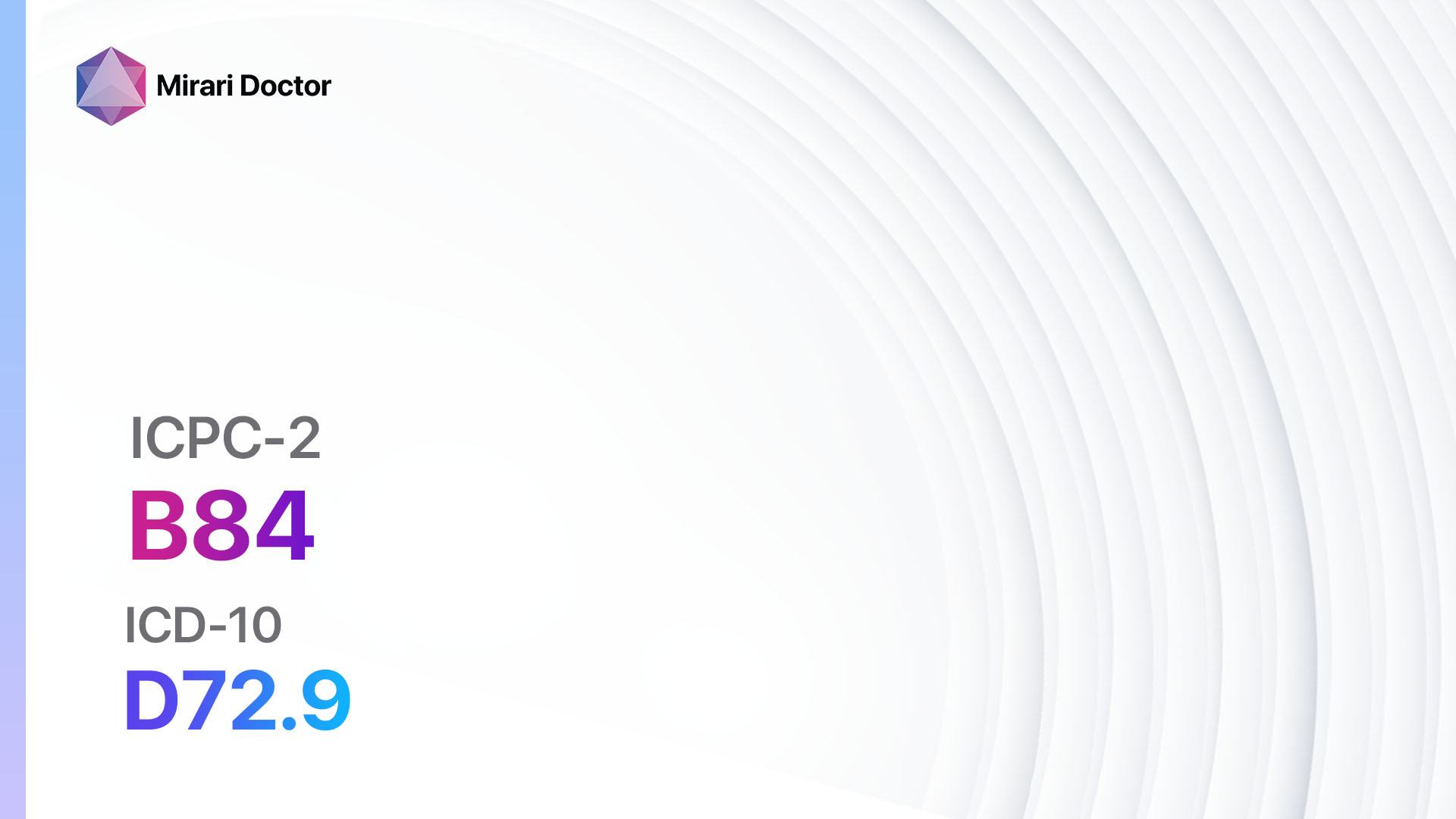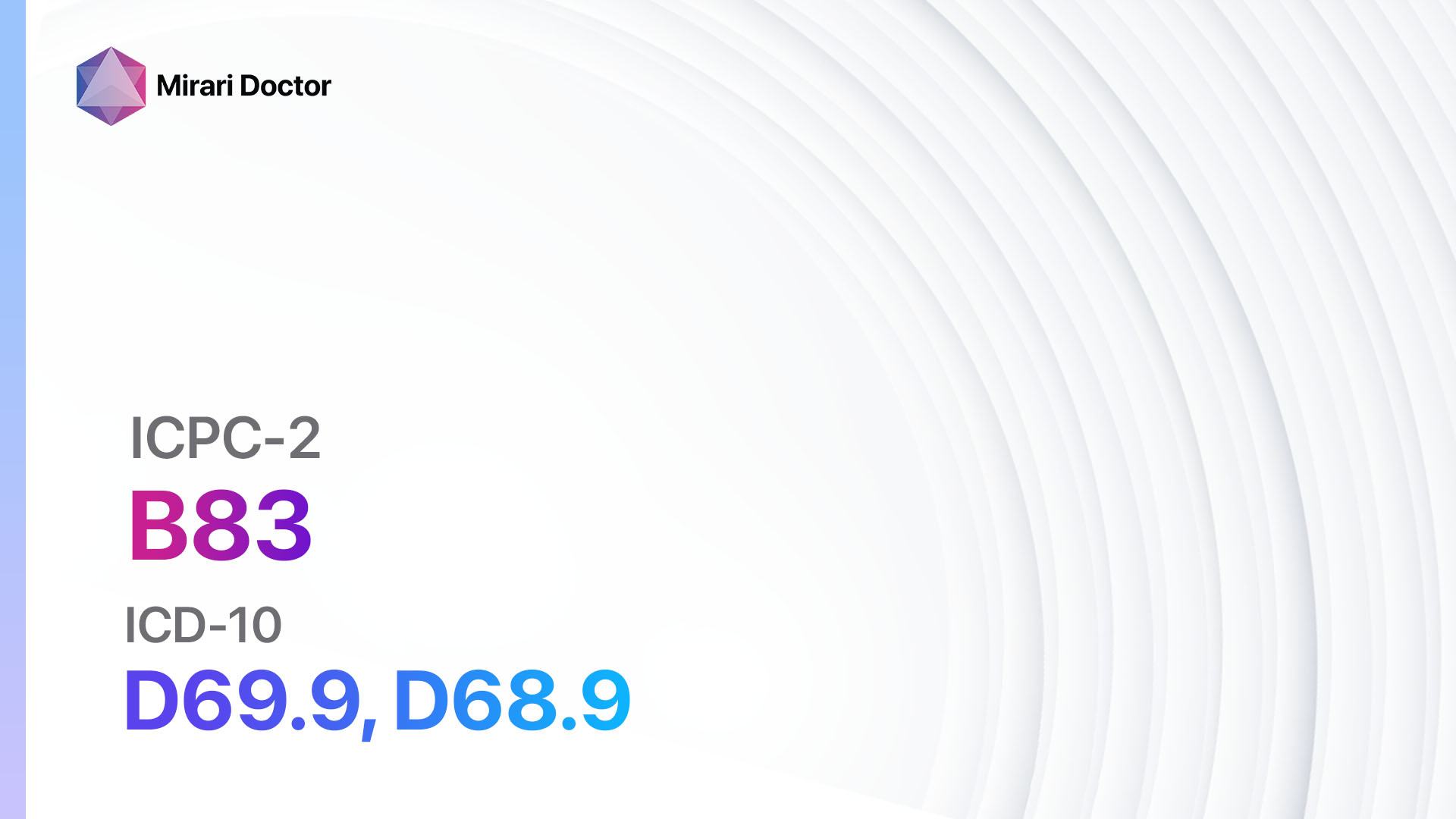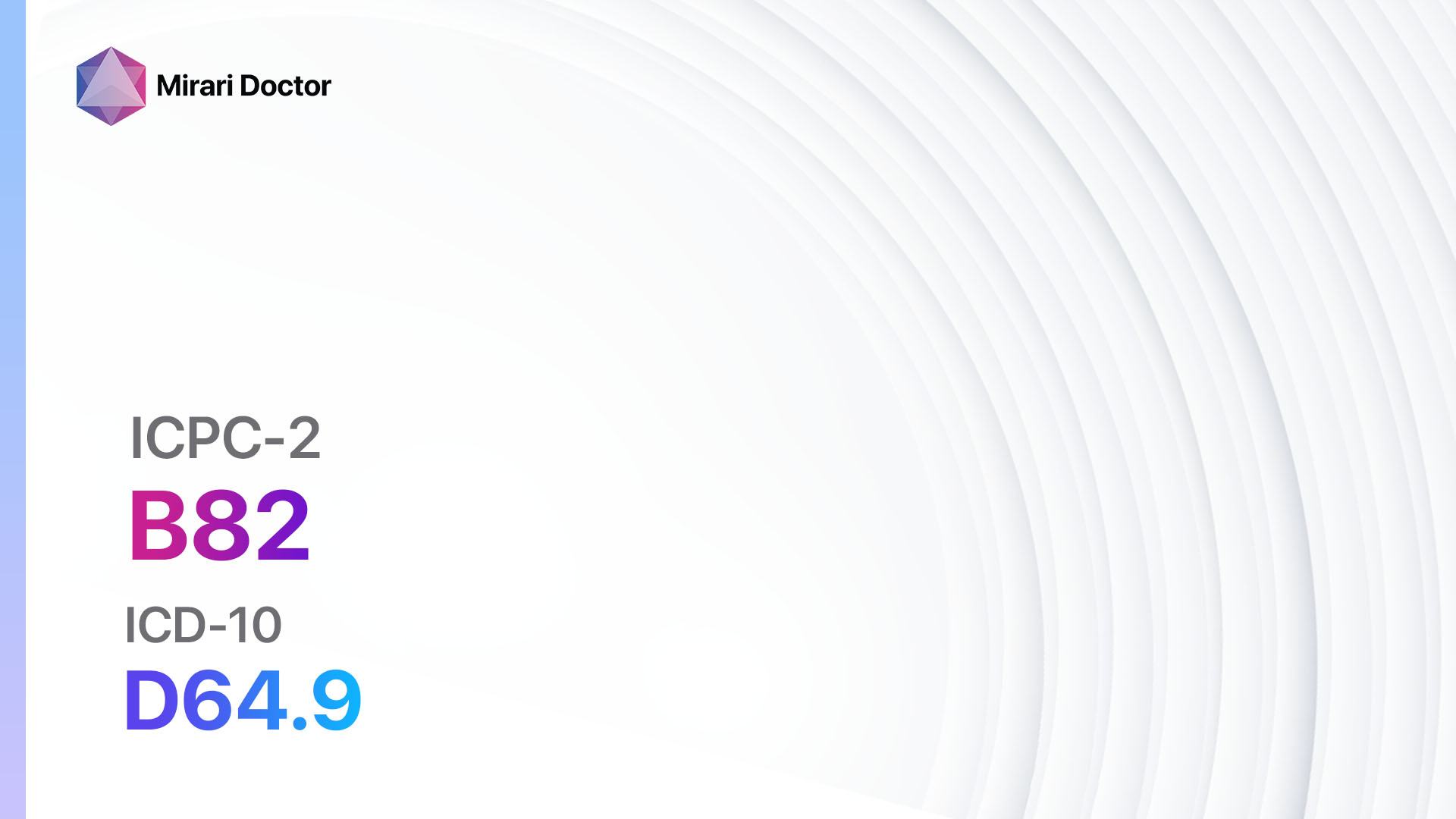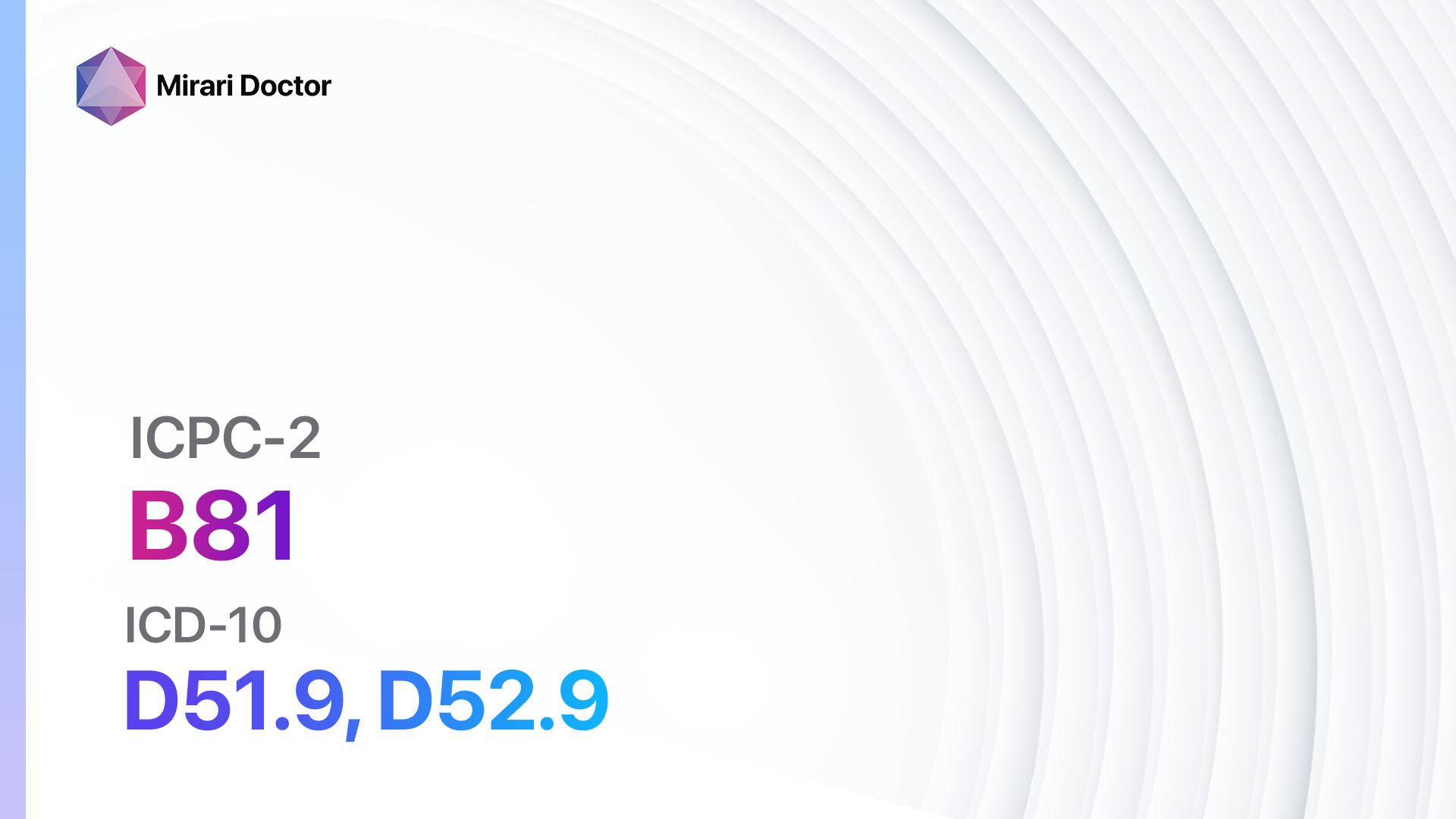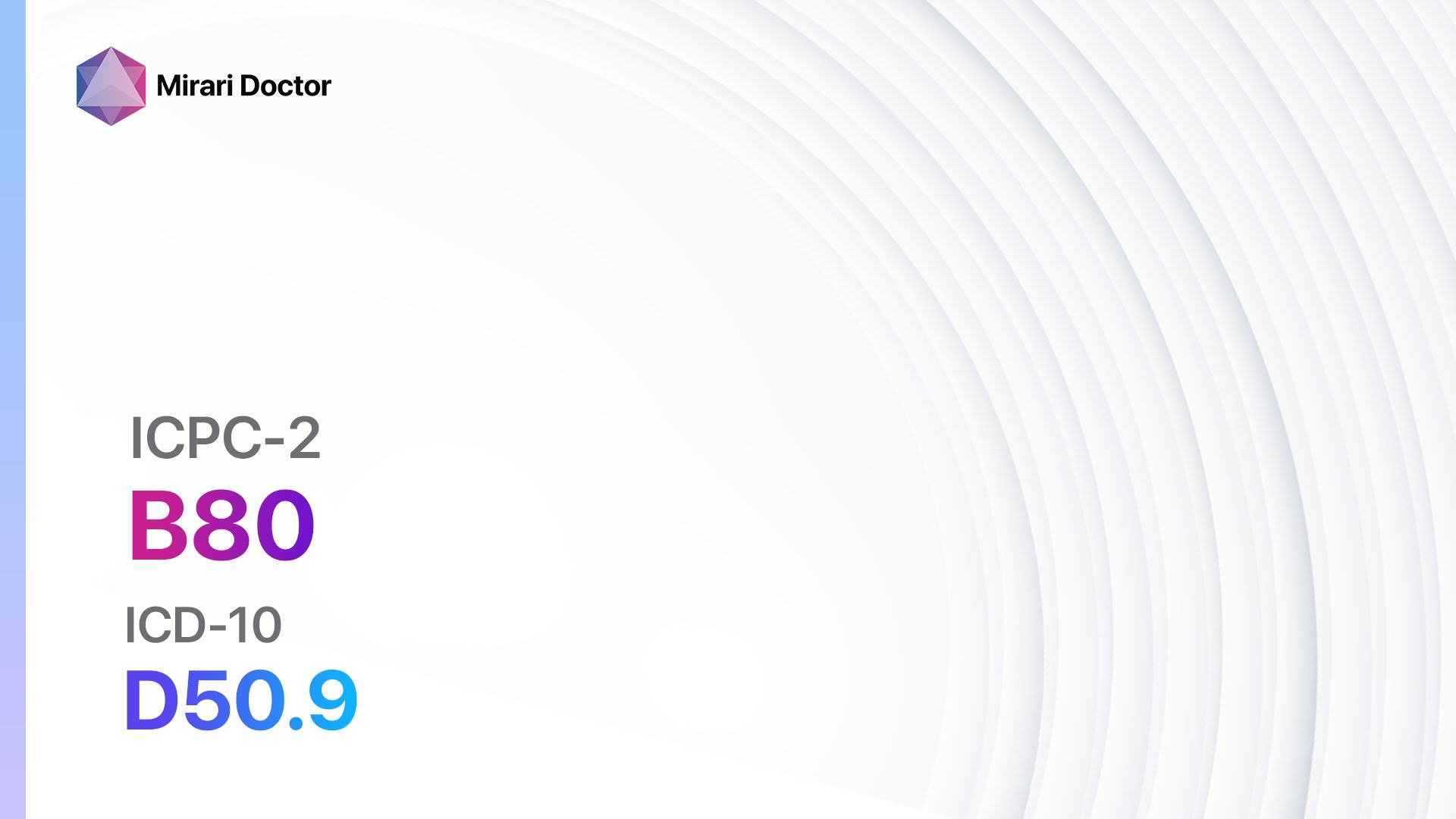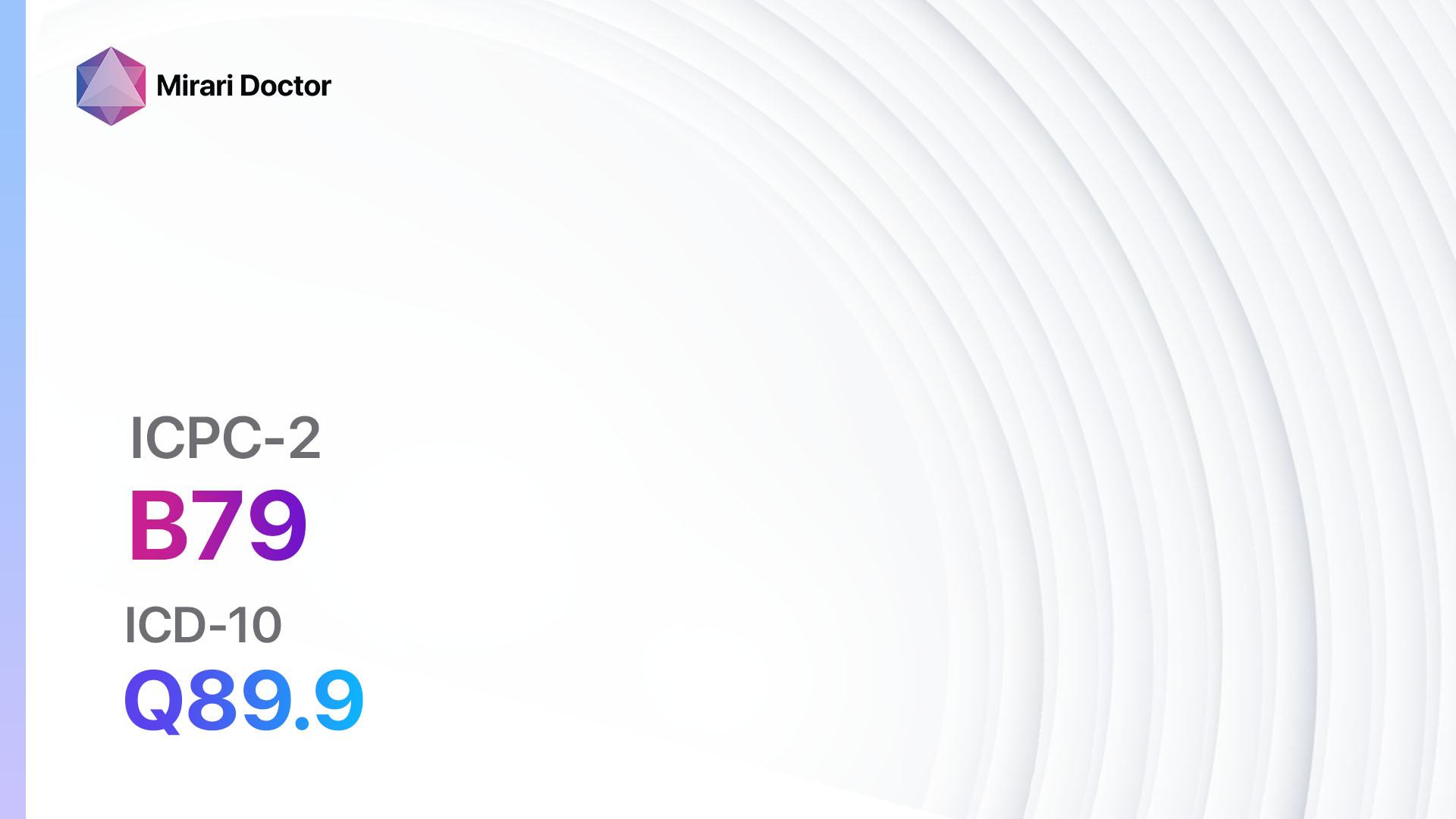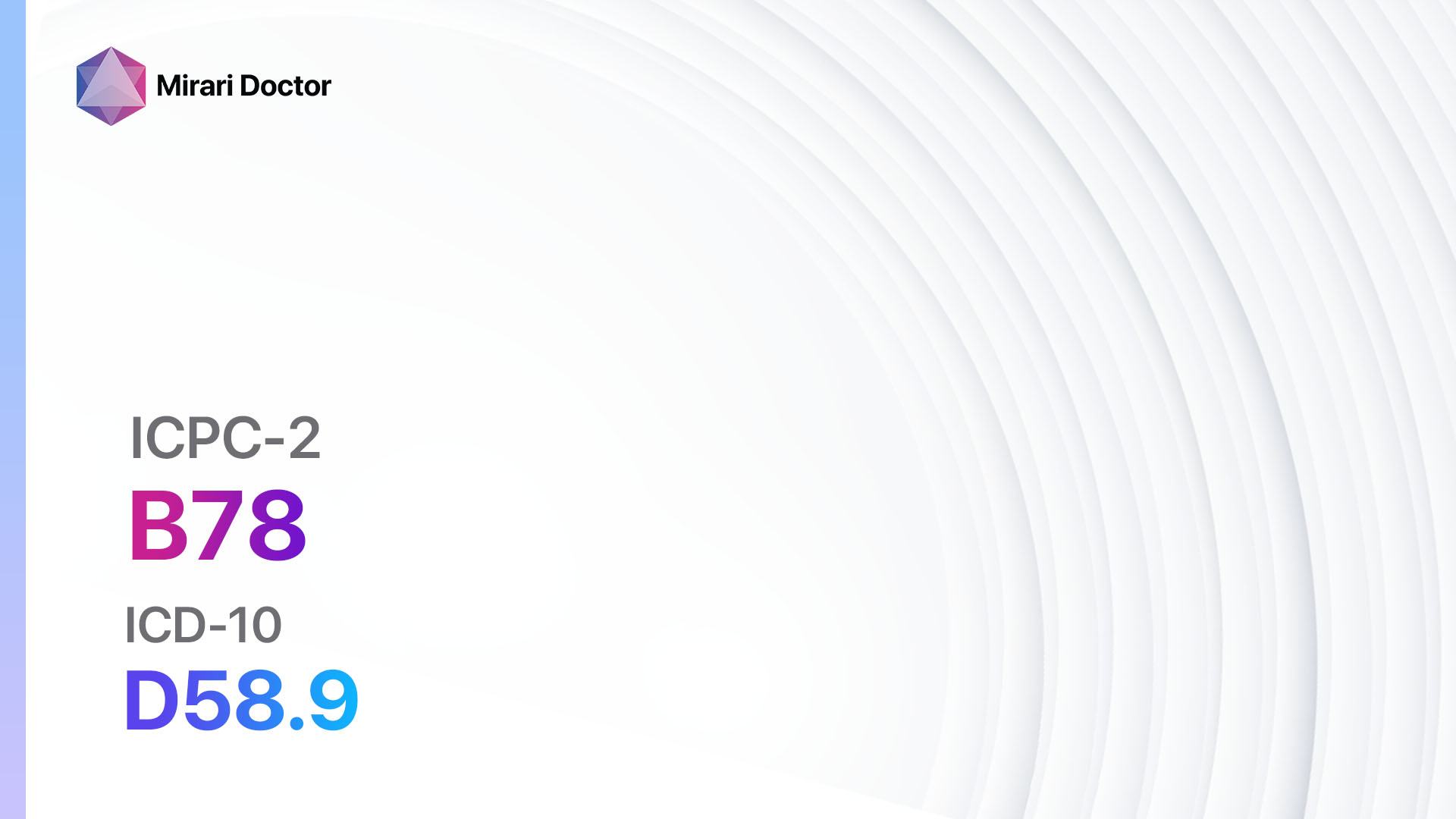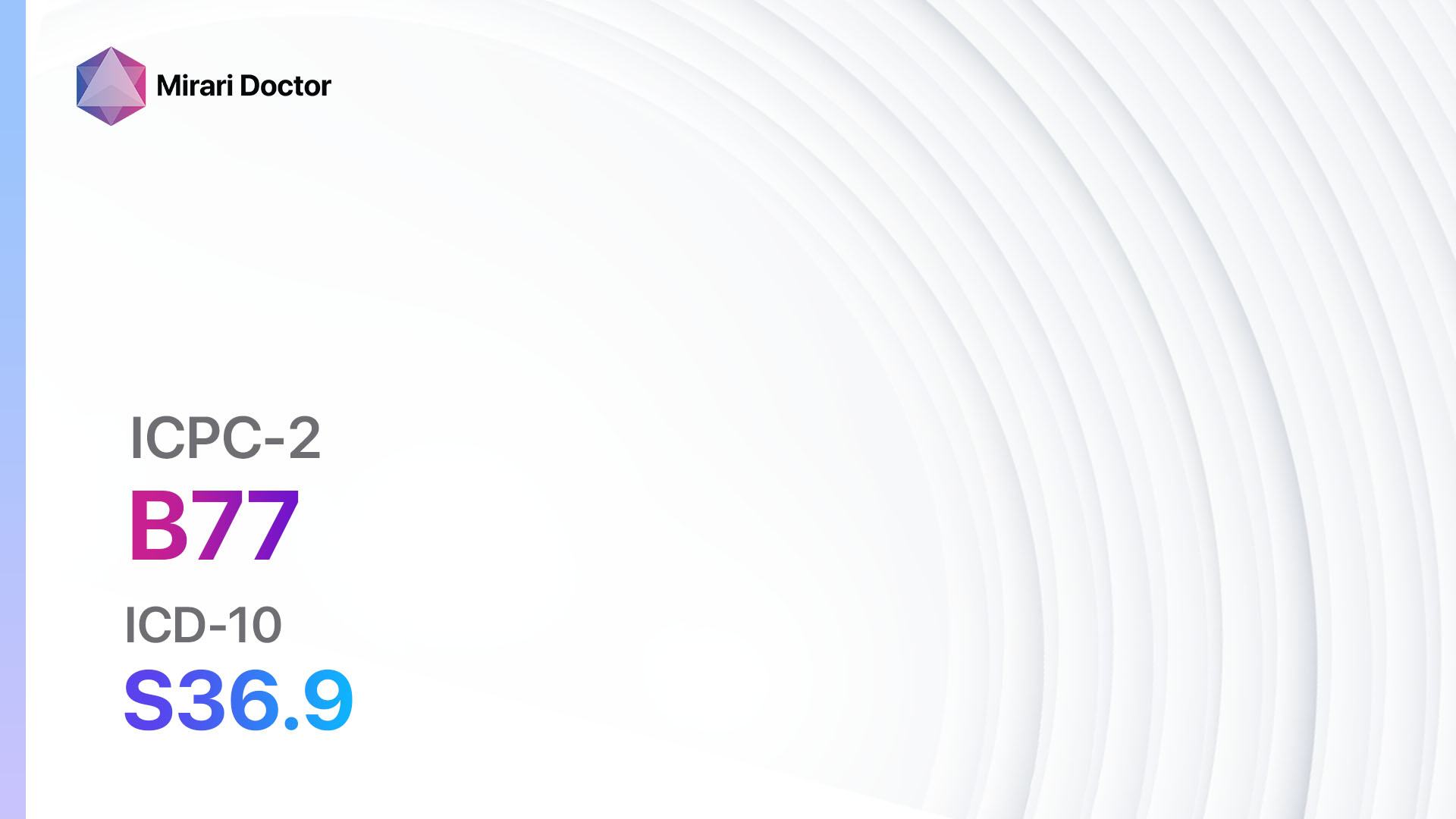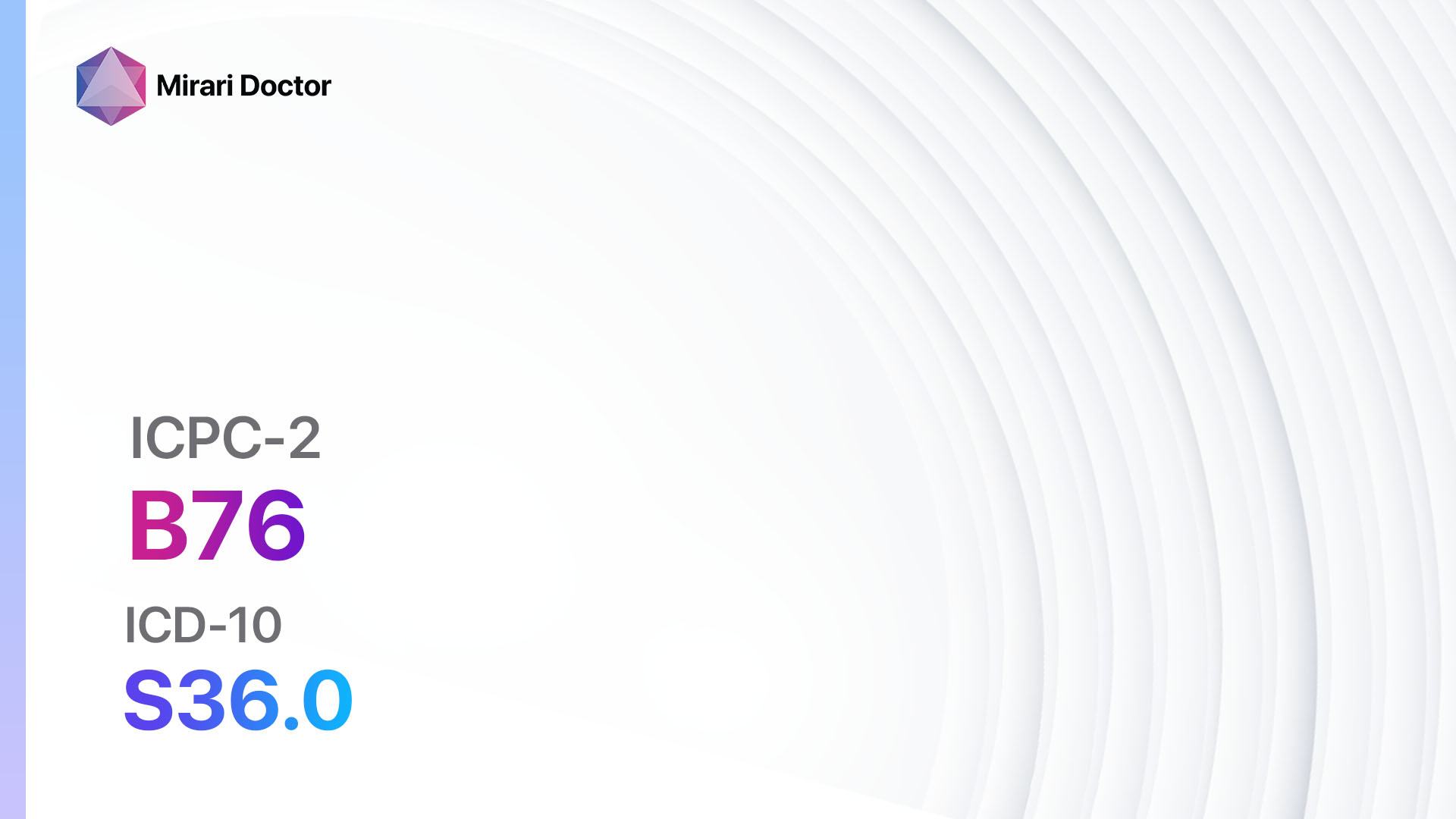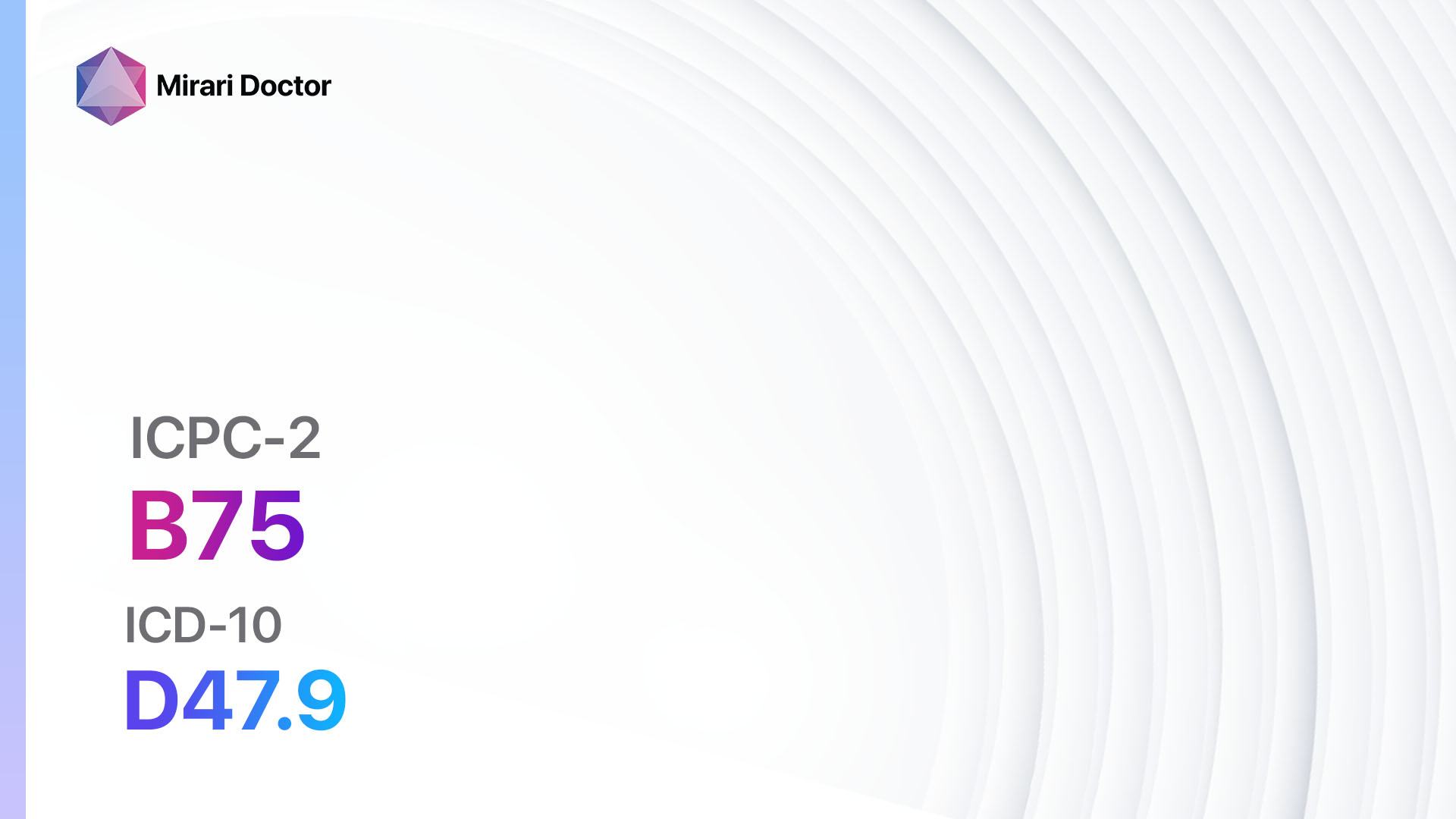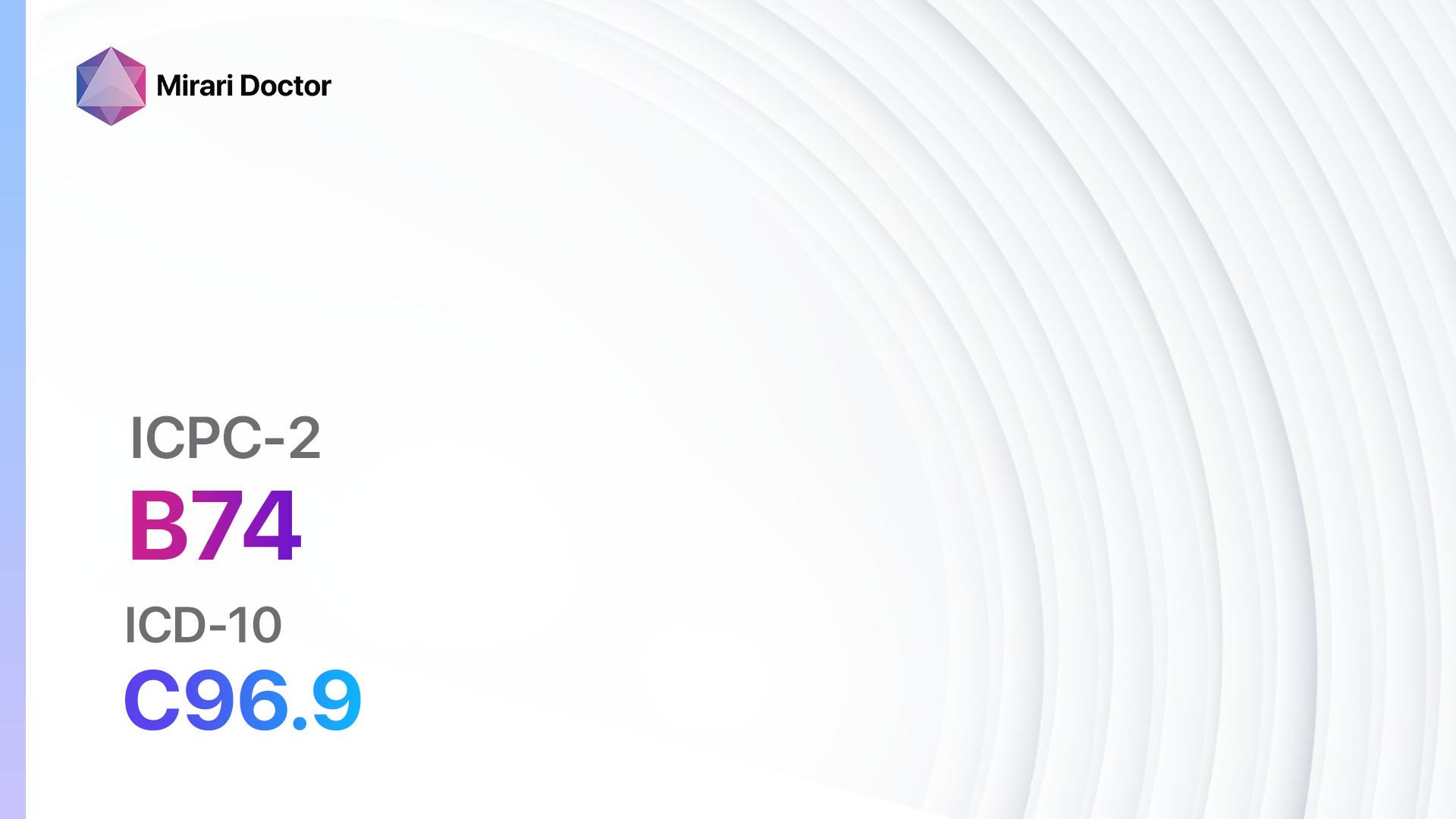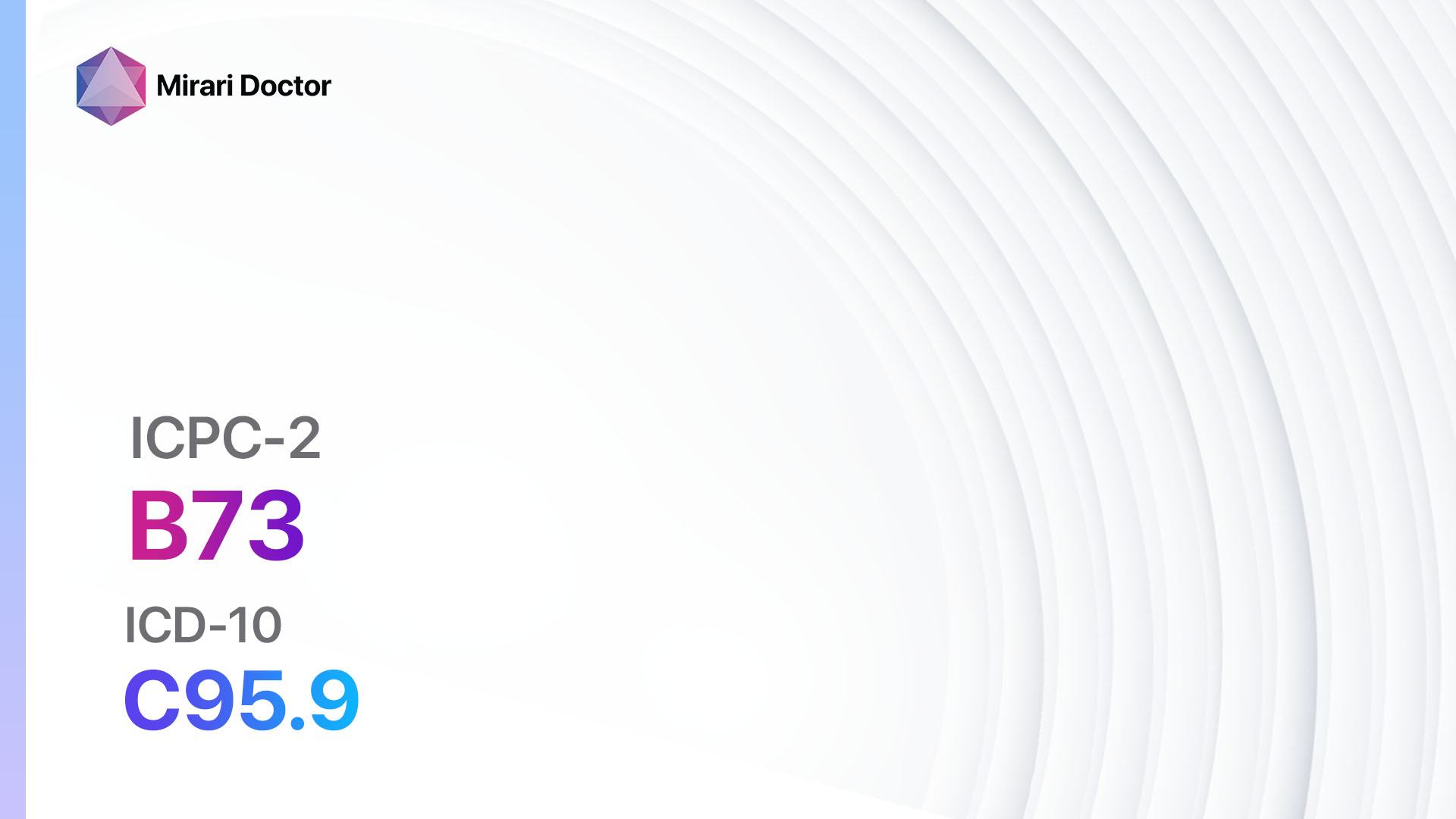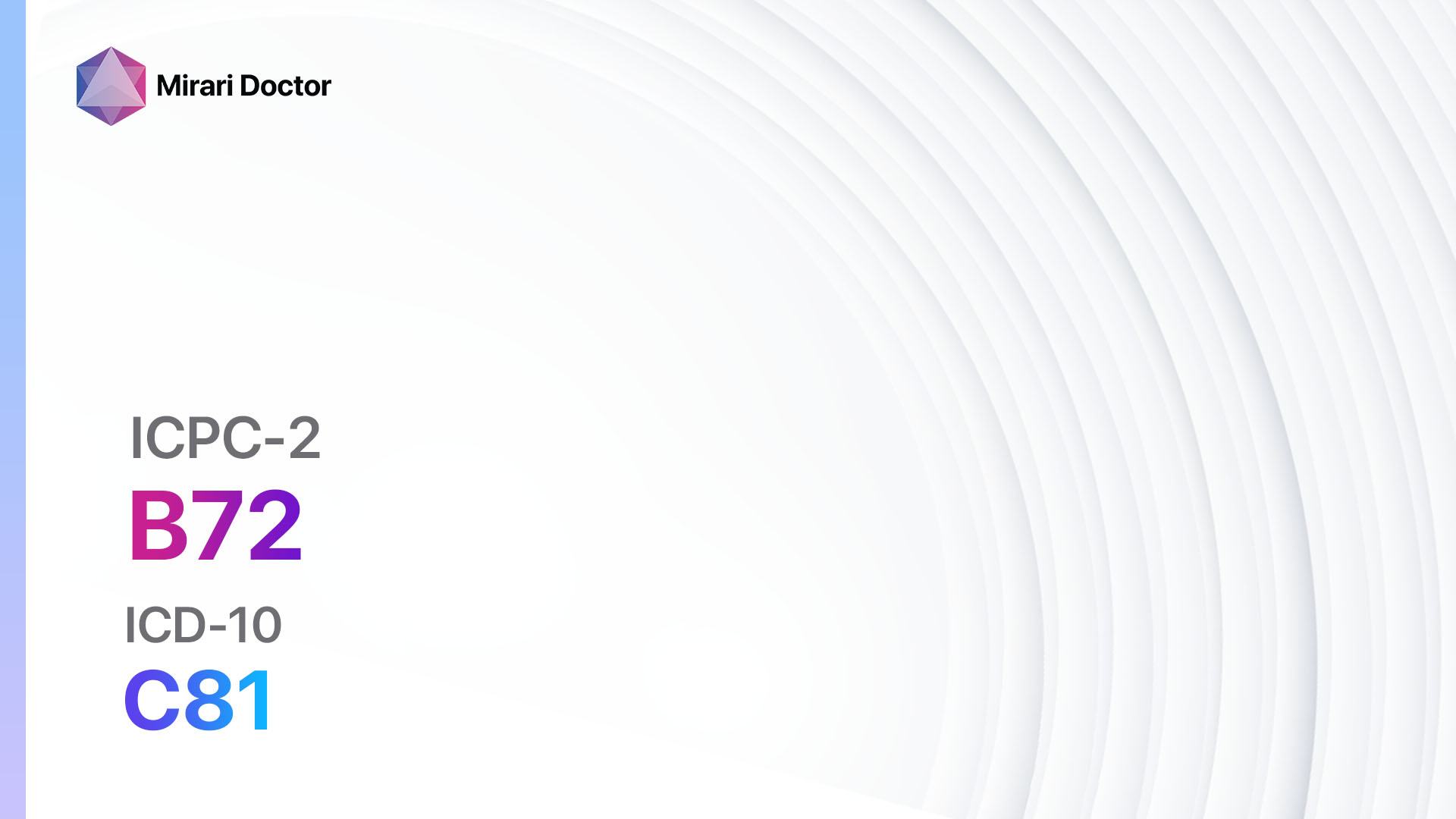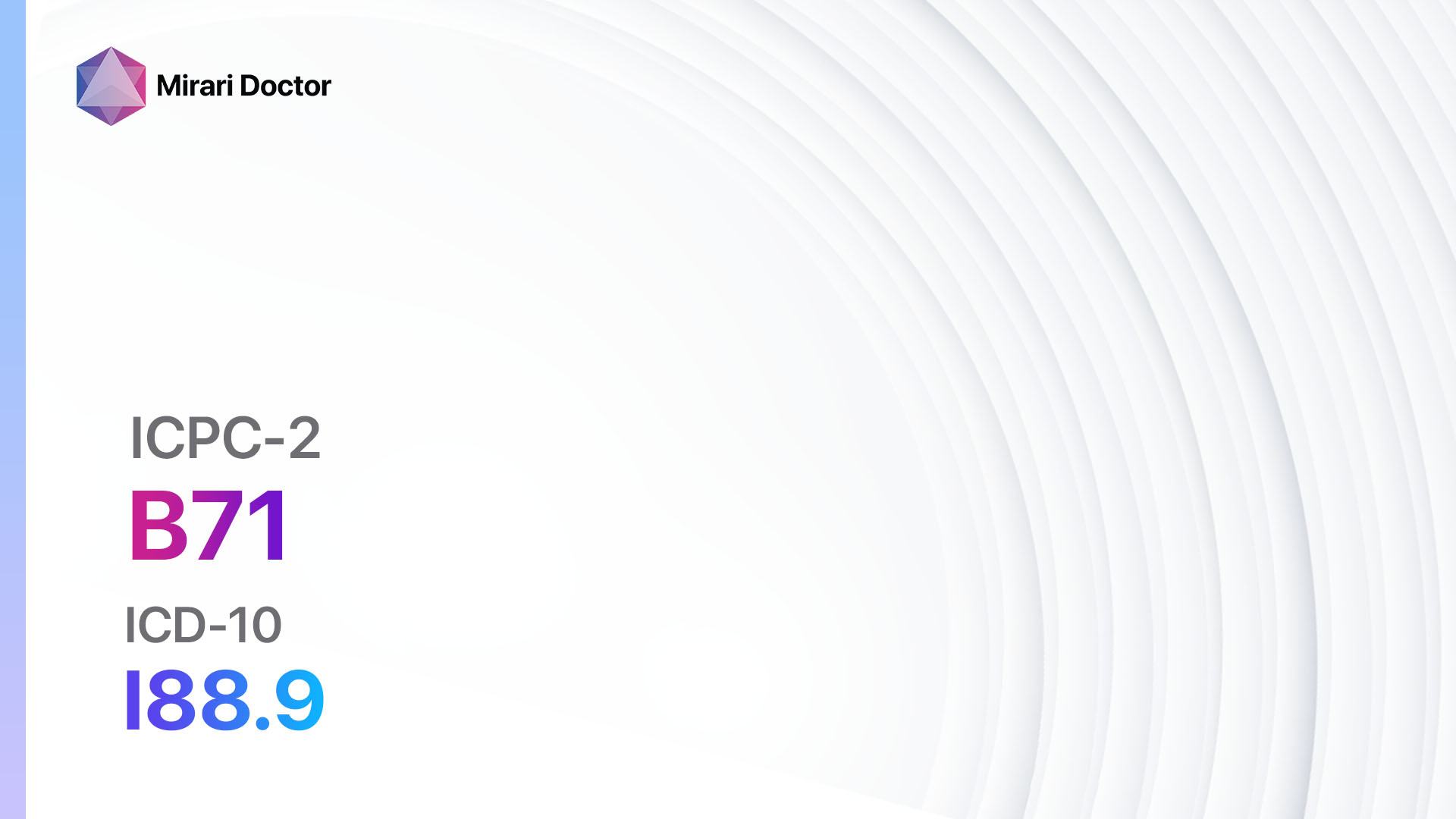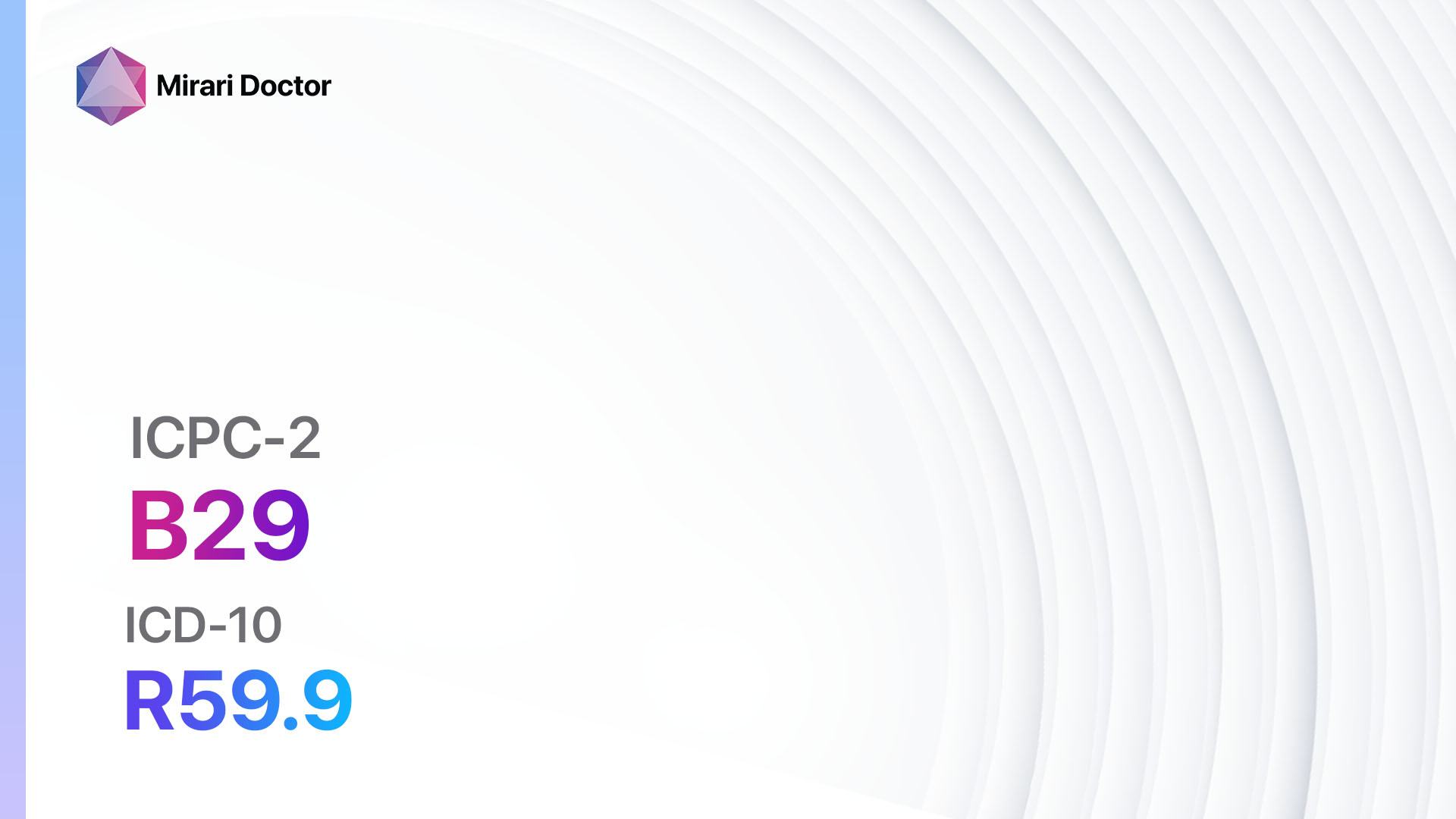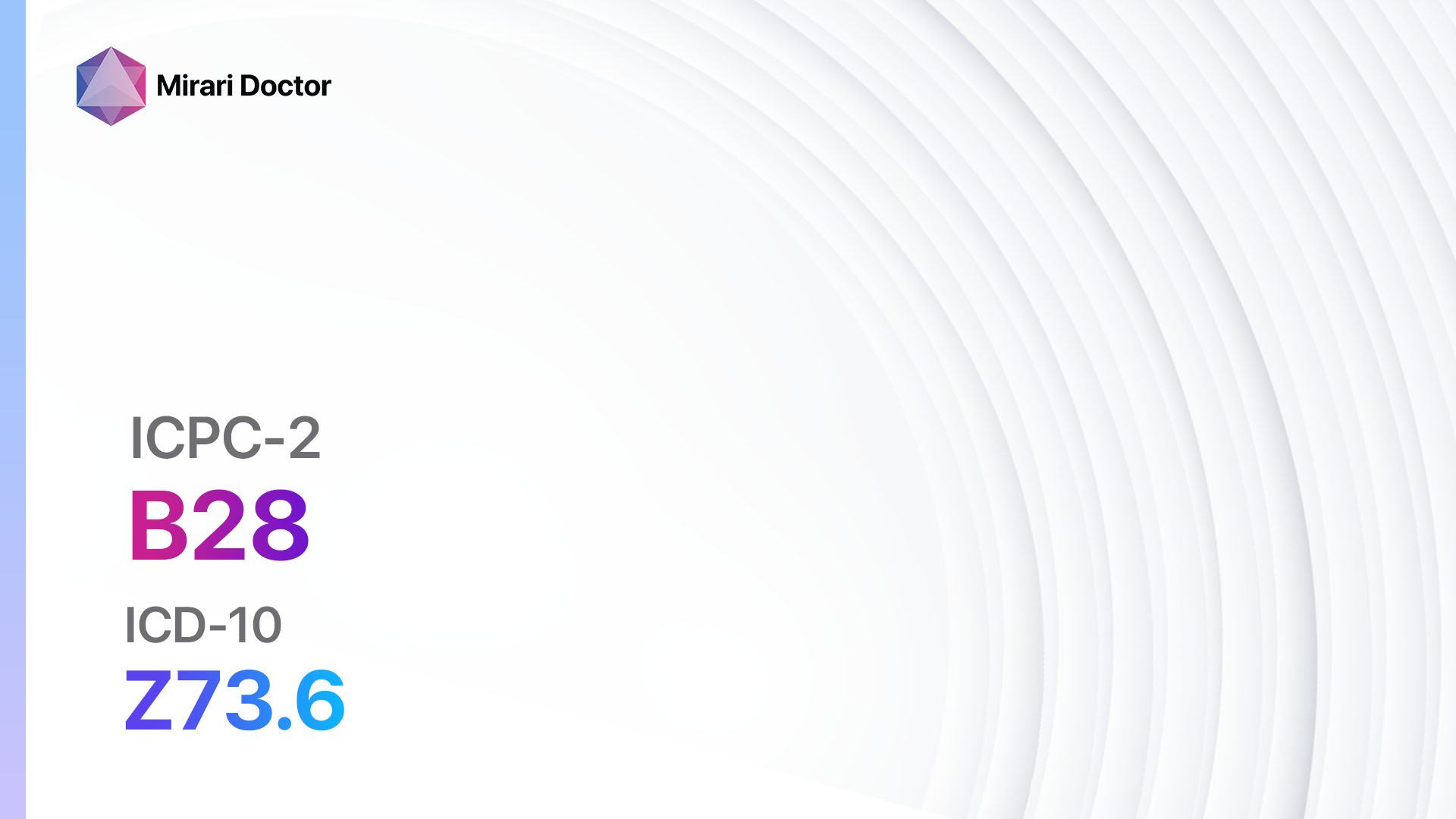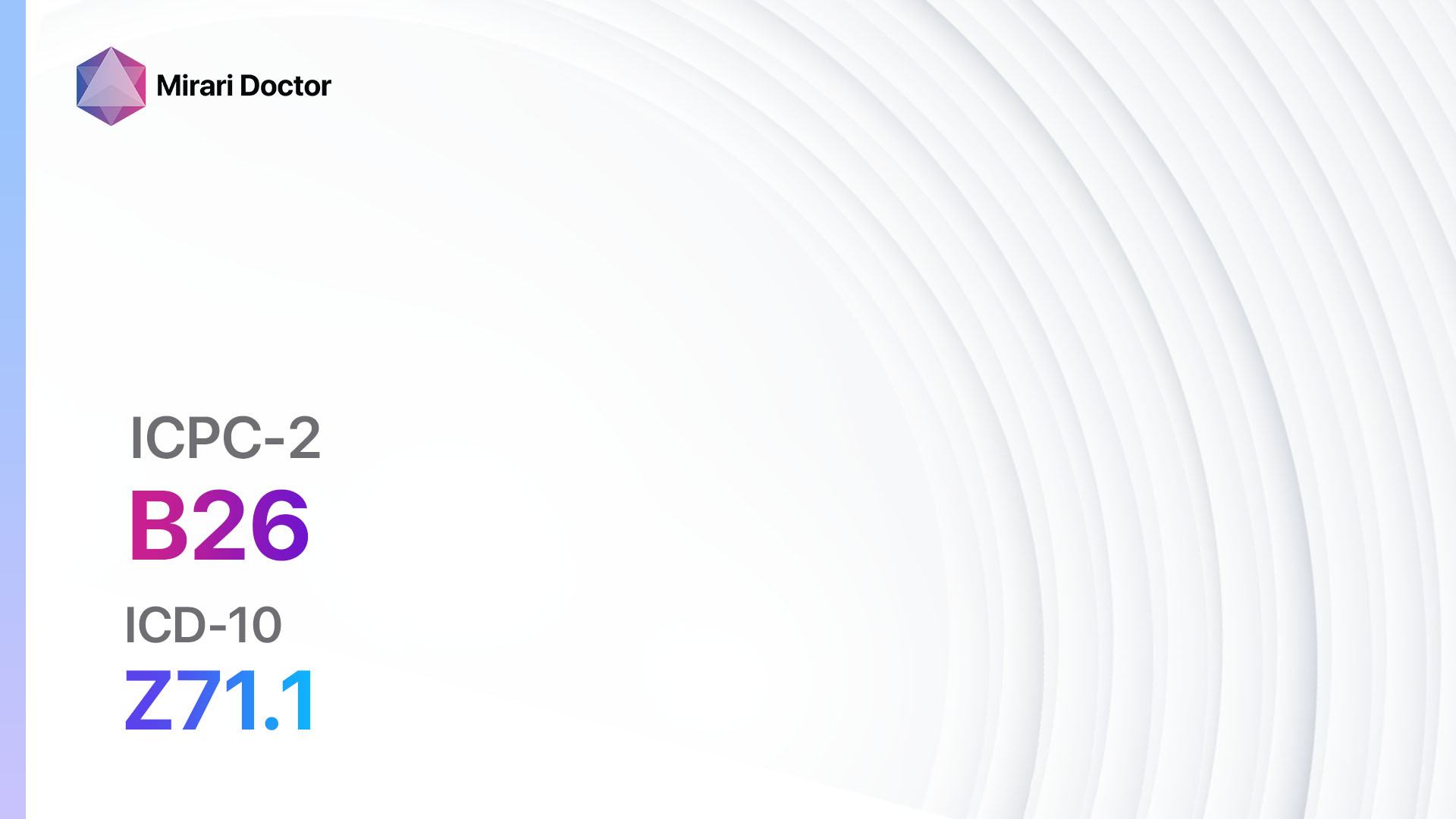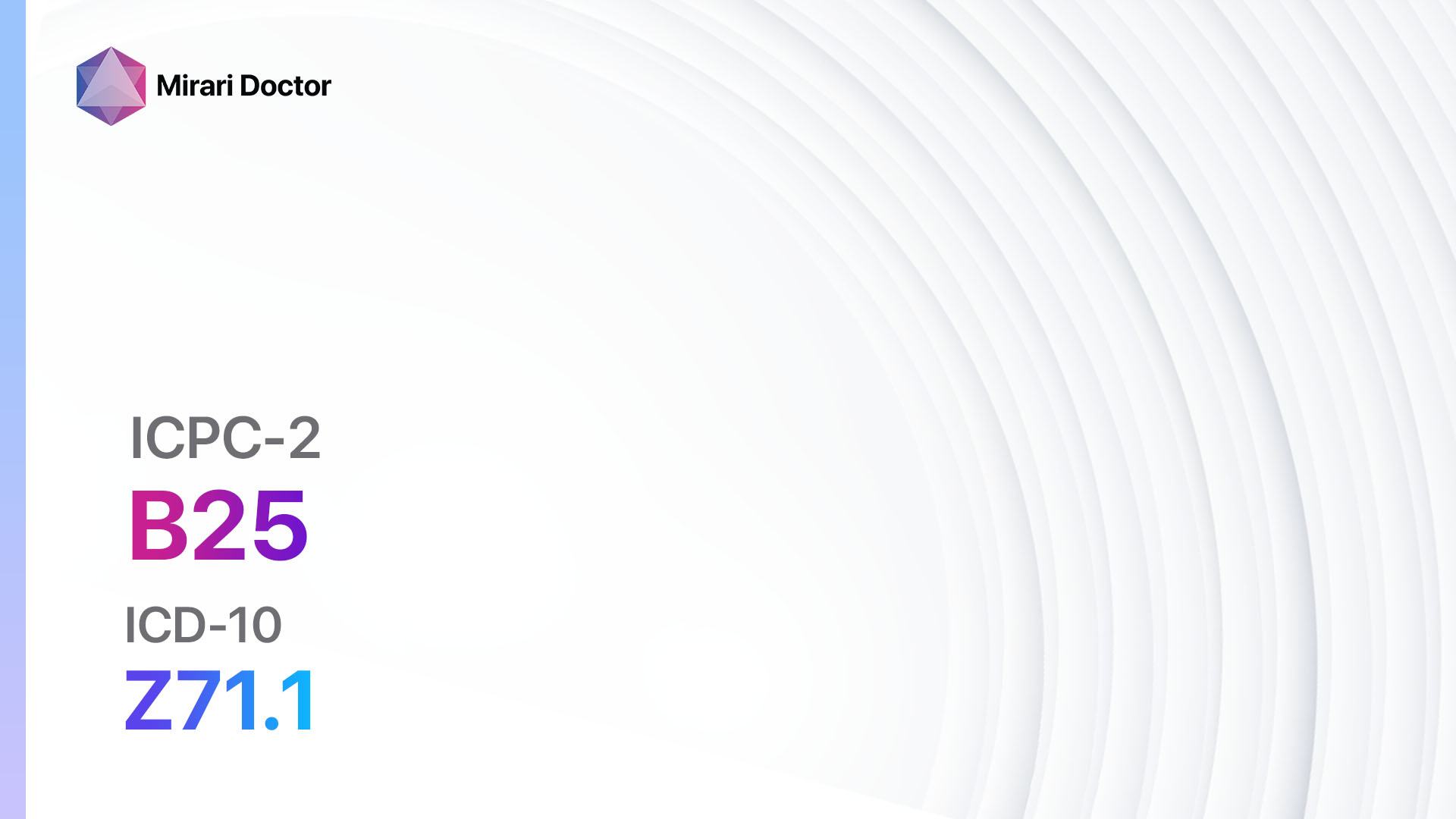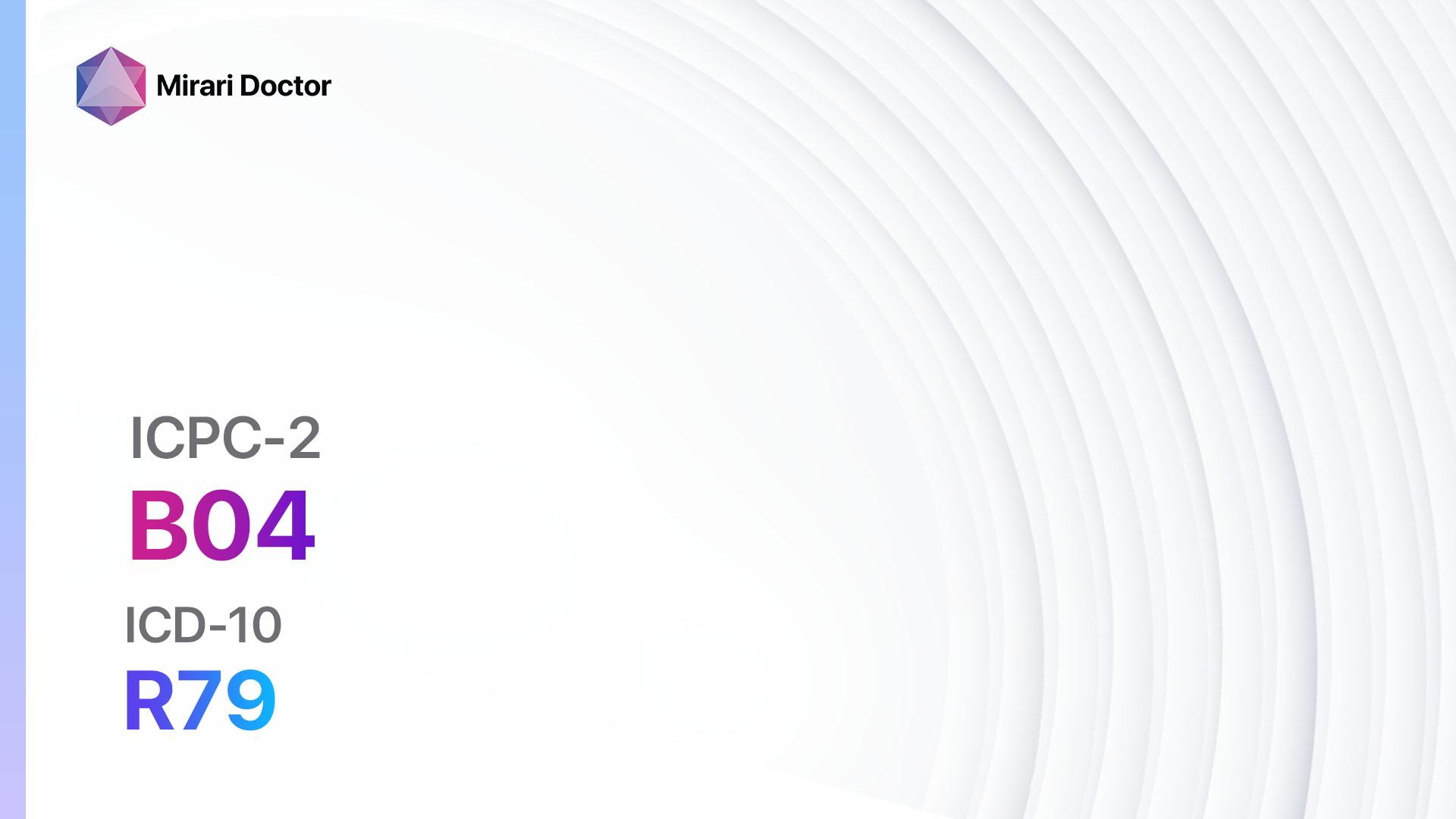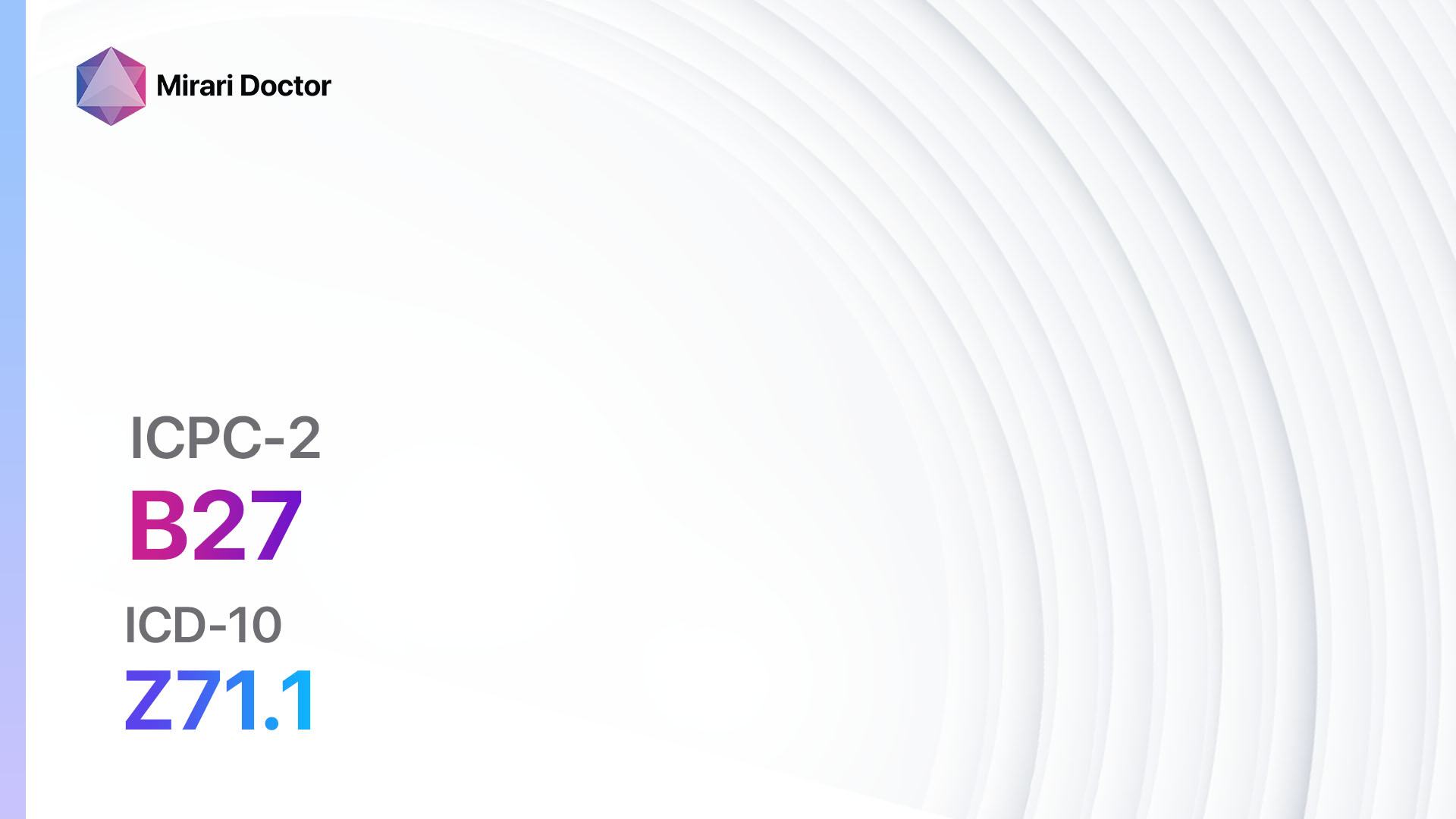
Introduction
Fear of blood/lymph disease other (ICPC-2: B27) is a condition characterized by an excessive and irrational fear or anxiety related to blood or lymph diseases[1]. This fear may cause significant distress and impairment in daily functioning[2]. The aim of this guide is to provide a comprehensive overview of the condition, including its symptoms, causes, diagnostic steps, possible interventions, and patient education.
Codes
- ICPC-2 Code: B27 Fear blood/lymph disease other[3]
- ICD-10 Code: Z71.1 Person with feared complaint in whom no diagnosis is made[4]
Symptoms
- Excessive and irrational fear or anxiety related to blood or lymph diseases[5]
- Avoidance of situations or activities that may involve blood or lymph, such as medical procedures or discussions about diseases[6]
- Physical symptoms of anxiety, such as rapid heartbeat, sweating, trembling, or shortness of breath[7]
- Panic attacks or intense anxiety when exposed to blood or lymph-related stimuli[8]
Causes
The exact cause of fear of blood/lymph disease other is unknown. However, several factors may contribute to the development of this condition, including:
- Traumatic experiences related to blood or lymph diseases, such as witnessing a traumatic medical procedure or experiencing a personal health scare[9]
- Learned behavior from family members or peers who also have a fear of blood or lymph diseases[10]
- Genetic predisposition to anxiety disorders
- Overactive amygdala, the part of the brain responsible for processing fear and anxiety
Diagnostic Steps
Medical History
- Conduct a comprehensive medical history to gather relevant patient information, including risk factors, medical conditions, and symptoms related to the fear of blood/lymph disease other
- Inquire about any traumatic experiences or family history of anxiety disorders
- Assess the impact of the fear on the patient’s daily life and functioning
Physical Examination
- Perform a thorough physical examination to rule out any underlying medical conditions that may be contributing to the fear or anxiety
- Look for signs of anxiety, such as rapid heartbeat, sweating, or trembling
Laboratory Tests
- No specific laboratory tests are required for the diagnosis of fear of blood/lymph disease other
- However, blood tests may be performed to rule out any underlying medical conditions or to provide reassurance to the patient
Diagnostic Imaging
- Diagnostic imaging is not typically necessary for the diagnosis of fear of blood/lymph disease other
Other Tests
- No other specific diagnostic tests are required for the diagnosis of fear of blood/lymph disease other
- However, additional psychological assessments may be conducted to evaluate the severity of the fear and its impact on the patient’s life
Follow-up and Patient Education
- Schedule regular follow-up appointments to monitor the patient’s progress and provide ongoing support
- Provide patient education materials and resources on anxiety management techniques, such as relaxation exercises and cognitive-behavioral therapy
Possible Interventions
Traditional Interventions
Medications:
Top 5 drugs for fear of blood/lymph disease other:
- Selective serotonin reuptake inhibitors (SSRIs) (e.g., Sertraline, Fluoxetine):
- Cost: Generic versions can be $3-$50/month.
- Contraindications: Hypersensitivity to SSRIs, concurrent use of monoamine oxidase inhibitors (MAOIs).
- Side effects: Nausea, headache, insomnia.
- Severe side effects: Serotonin syndrome, suicidal thoughts.
- Drug interactions: MAOIs, other serotonergic medications.
- Warning: May take several weeks to achieve full therapeutic effect.
- Benzodiazepines (e.g., Alprazolam, Diazepam):
- Cost: Generic versions can be $4-$50/month.
- Contraindications: Hypersensitivity to benzodiazepines, history of substance abuse.
- Side effects: Drowsiness, dizziness, confusion.
- Severe side effects: Respiratory depression, dependence.
- Drug interactions: Alcohol, opioids.
- Warning: Risk of tolerance and dependence with long-term use.
- Beta-blockers (e.g., Propranolol, Atenolol):
- Cost: Generic versions can be $4-$30/month.
- Contraindications: Severe bradycardia, heart block.
- Side effects: Fatigue, dizziness, bradycardia.
- Severe side effects: Bronchospasm, heart failure.
- Drug interactions: Calcium channel blockers, insulin.
- Warning: Should not be abruptly stopped.
- Antidepressants (e.g., Venlafaxine, Escitalopram):
- Cost: Generic versions can be $4-$50/month.
- Contraindications: Hypersensitivity to antidepressants, concurrent use of MAOIs.
- Side effects: Nausea, headache, sexual dysfunction.
- Severe side effects: Serotonin syndrome, suicidal thoughts.
- Drug interactions: MAOIs, other serotonergic medications.
- Warning: May take several weeks to achieve full therapeutic effect.
- Antipsychotics (e.g., Quetiapine, Risperidone):
- Cost: Generic versions can be $4-$50/month.
- Contraindications: Hypersensitivity to antipsychotics, history of agranulocytosis.
- Side effects: Sedation, weight gain, extrapyramidal symptoms.
- Severe side effects: Neuroleptic malignant syndrome, tardive dyskinesia.
- Drug interactions: Other antipsychotics, medications that prolong QT interval.
- Warning: Regular monitoring of metabolic parameters required.
Alternative Drugs:
- Buspirone: An anxiolytic medication that does not cause sedation or dependence.
- Hydroxyzine: An antihistamine with anxiolytic properties.
- Pregabalin: An anticonvulsant medication used for anxiety disorders.
- Gabapentin: Another anticonvulsant medication used for anxiety disorders.
- Propranolol: A beta-blocker that can help reduce physical symptoms of anxiety.
Surgical Procedures:
- Surgical procedures are not indicated for the treatment of fear of blood/lymph disease other.
Alternative Interventions
- Cognitive-behavioral therapy (CBT): A form of psychotherapy that helps individuals identify and change negative thought patterns and behaviors associated with their fear. Cost: $100-$200 per session.
- Exposure therapy: A type of CBT that involves gradually exposing the individual to their fear in a controlled and supportive environment. Cost: $100-$200 per session.
- Mindfulness-based stress reduction (MBSR): A practice that combines mindfulness meditation, body awareness, and yoga to reduce anxiety and promote relaxation. Cost: $200-$300 for an 8-week program.
- Support groups: Joining a support group with individuals who have similar fears can provide a sense of community and understanding. Cost: Varies depending on the organization or group.
Lifestyle Interventions
- Relaxation techniques: Practicing relaxation techniques such as deep breathing, progressive muscle relaxation, or guided imagery can help reduce anxiety. Cost: Varies depending on the specific practice.
- Regular exercise: Engaging in regular physical activity can help reduce anxiety and improve overall well-being. Cost: Varies depending on individual preferences and access to exercise facilities.
- Stress management: Learning and implementing stress management techniques, such as time management, prioritization, and self-care, can help reduce anxiety. Cost: Varies depending on the specific practice.
- Healthy diet: Consuming a balanced diet rich in fruits, vegetables, whole grains, and lean proteins can support overall mental and physical health. Cost: Varies depending on individual food choices and preferences.
It is important to note that the cost ranges provided are approximate and may vary depending on the location and availability of the interventions.
Conclusion
Fear of blood/lymph disease other (ICPC-2: B27) is a condition characterized by an excessive and irrational fear or anxiety related to blood or lymph diseases. This guide has provided an overview of the symptoms, causes, diagnostic steps, possible interventions, and patient education for this condition. It is important for healthcare professionals to approach patients with empathy and understanding, and to tailor interventions based on individual needs and preferences.
Mirari Cold Plasma Alternative Intervention
Understanding Mirari Cold Plasma
- Safe and Non-Invasive Treatment: Mirari Cold Plasma is a safe and non-invasive treatment option for various skin conditions. It does not require incisions, minimizing the risk of scarring, bleeding, or tissue damage.
- Efficient Extraction of Foreign Bodies: Mirari Cold Plasma facilitates the removal of foreign bodies from the skin by degrading and dissociating organic matter, allowing easier access and extraction.
- Pain Reduction and Comfort: Mirari Cold Plasma has a local analgesic effect, providing pain relief during the treatment, making it more comfortable for the patient.
- Reduced Risk of Infection: Mirari Cold Plasma has antimicrobial properties, effectively killing bacteria and reducing the risk of infection.
- Accelerated Healing and Minimal Scarring: Mirari Cold Plasma stimulates wound healing and tissue regeneration, reducing healing time and minimizing the formation of scars.
Mirari Cold Plasma Prescription
Video instructions for using Mirari Cold Plasma Device – B27 Fear blood/lymph disease other (ICD-10:Z71.1)
| Mild | Moderate | Severe |
| Mode setting: 7 (Immunotherapy) Location: 1 (Sacrum) Morning: 15 minutes, Evening: 15 minutes |
Mode setting: 7 (Immunotherapy) Location: 1 (Sacrum) Morning: 30 minutes, Lunch: 30 minutes, Evening: 30 minutes |
Mode setting: 7 (Immunotherapy) Location:1 (Sacrum) Morning: 30 minutes, Lunch: 30 minutes, Evening: 30 minutes |
| Mode setting: 7 (Immunotherapy) Location:4 (Heart, Bile & Pancreas) Morning: 15 minutes, Evening: 15 minutes |
Mode setting:7 (Immunotherapy) Location: 4 (Heart, Bile & Pancreas) Morning: 30 minutes, Lunch: 30 minutes, Evening: 30 minutes |
Mode setting: 7 (Immunotherapy) Location: 4 (Heart, Bile & Pancreas) Morning: 30 minutes, Lunch: 30 minutes, Evening: 30 minutes |
| Mode setting: 7 (Immunotherapy) Location: 7 (Neuro system & ENT) Morning: 15 minutes, Evening: 15 minutes |
Mode setting: 7 (Immunotherapy) Location: 7 (Neuro system & ENT) Morning: 30 minutes, Lunch: 30 minutes, Evening: 30 minutes |
Mode setting: 7 (Immunotherapy) Location: 7 (Neuro system & ENT) Morning: 30 minutes, Lunch: 30 minutes, Evening: 30 minutes |
| Total Morning: 45 minutes approx. $7.50 USD, Evening: 45 minutes approx. $7.50 USD |
Total Morning: 90 minutes approx. $15 USD, Lunch: 90 minutes approx. $15 USD, Evening: 90 minutes approx. $15 USD |
Total Morning: 90 minutes approx. $15 USD, Lunch: 90 minutes approx. $15 USD, Evening: 90 minutes approx. $15 USD |
| Usual treatment for 7-60 days approx. $105 USD – $900 USD | Usual treatment for 6-8 weeks approx. $1,890 USD – $2,520 USD |
Usual treatment for 3-6 months approx. $4,050 USD – $8,100 USD
|
 |
|
Use the Mirari Cold Plasma device to treat Fear blood/lymph disease other effectively.
WARNING: MIRARI COLD PLASMA IS DESIGNED FOR THE HUMAN BODY WITHOUT ANY ARTIFICIAL OR THIRD PARTY PRODUCTS. USE OF OTHER PRODUCTS IN COMBINATION WITH MIRARI COLD PLASMA MAY CAUSE UNPREDICTABLE EFFECTS, HARM OR INJURY. PLEASE CONSULT A MEDICAL PROFESSIONAL BEFORE COMBINING ANY OTHER PRODUCTS WITH USE OF MIRARI.
Step 1: Cleanse the Skin
- Start by cleaning the affected area of the skin with a gentle cleanser or mild soap and water. Gently pat the area dry with a clean towel.
Step 2: Prepare the Mirari Cold Plasma device
- Ensure that the Mirari Cold Plasma device is fully charged or has fresh batteries as per the manufacturer’s instructions. Make sure the device is clean and in good working condition.
- Switch on the Mirari device using the power button or by following the specific instructions provided with the device.
- Some Mirari devices may have adjustable settings for intensity or treatment duration. Follow the manufacturer’s instructions to select the appropriate settings based on your needs and the recommended guidelines.
Step 3: Apply the Device
- Place the Mirari device in direct contact with the affected area of the skin. Gently glide or hold the device over the skin surface, ensuring even coverage of the area experiencing.
- Slowly move the Mirari device in a circular motion or follow a specific pattern as indicated in the user manual. This helps ensure thorough treatment coverage.
Step 4: Monitor and Assess:
- Keep track of your progress and evaluate the effectiveness of the Mirari device in managing your Fear blood/lymph disease other. If you have any concerns or notice any adverse reactions, consult with your health care professional.
Note
This guide is for informational purposes only and should not replace the advice of a medical professional. Always consult with your healthcare provider or a qualified medical professional for personal advice, diagnosis, or treatment. Do not solely rely on the information presented here for decisions about your health. Use of this information is at your own risk. The authors of this guide, nor any associated entities or platforms, are not responsible for any potential adverse effects or outcomes based on the content.
Mirari Cold Plasma System Disclaimer
- Purpose: The Mirari Cold Plasma System is a Class 2 medical device designed for use by trained healthcare professionals. It is registered for use in Thailand and Vietnam. It is not intended for use outside of these locations.
- Informational Use: The content and information provided with the device are for educational and informational purposes only. They are not a substitute for professional medical advice or care.
- Variable Outcomes: While the device is approved for specific uses, individual outcomes can differ. We do not assert or guarantee specific medical outcomes.
- Consultation: Prior to utilizing the device or making decisions based on its content, it is essential to consult with a Certified Mirari Tele-Therapist and your medical healthcare provider regarding specific protocols.
- Liability: By using this device, users are acknowledging and accepting all potential risks. Neither the manufacturer nor the distributor will be held accountable for any adverse reactions, injuries, or damages stemming from its use.
- Geographical Availability: This device has received approval for designated purposes by the Thai and Vietnam FDA. As of now, outside of Thailand and Vietnam, the Mirari Cold Plasma System is not available for purchase or use.
References
- American Psychiatric Association. (2013). Diagnostic and statistical manual of mental disorders (5th ed.). https://doi.org/10.1176/appi.books.9780890425596
- Kessler, R. C., Petukhova, M., Sampson, N. A., Zaslavsky, A. M., & Wittchen, H.-U. (2012). Twelve-month and lifetime prevalence and lifetime morbid risk of anxiety and mood disorders in the United States. International Journal of Methods in Psychiatric Research, 21(3), 169–184. https://doi.org/10.1002/mpr.1359
- World Organization of Family Doctors. (2005). ICPC-2-R: International Classification of Primary Care (2nd ed., revised). Oxford University Press.
- World Health Organization. (2019). International statistical classification of diseases and related health problems (11th ed.). https://icd.who.int/
- Olatunji, B. O., Cisler, J. M., & Deacon, B. J. (2010). Efficacy of cognitive behavioral therapy for anxiety disorders: a review of meta-analytic findings. Psychiatric Clinics of North America, 33(3), 557-577. https://doi.org/10.1016/j.psc.2010.04.002
- Barlow, D. H. (2002). Anxiety and its disorders: The nature and treatment of anxiety and panic (2nd ed.). Guilford Press.
- Kreibig, S. D. (2010). Autonomic nervous system activity in emotion: A review. Biological Psychology, 84(3), 394-421. https://doi.org/10.1016/j.biopsycho.2010.03.010
- Craske, M. G., & Stein, M. B. (2016). Anxiety. The Lancet, 388(10063), 3048-3059. https://doi.org/10.1016/S0140-6736(16)30381-6
- Oar, E. L., Farrell, L. J., & Ollendick, T. H. (2015). One session treatment for specific phobias: An adaptation for paediatric blood-injection-injury phobia in youth. Clinical Child and Family Psychology Review, 18(4), 370-394. https://doi.org/10.1007/s10567-015-0189-3
- Ollendick, T. H., & Muris, P. (2015). The scientific legacy of Little Hans and Little Albert: Future directions for research on specific phobias in youth. Journal of Clinical Child & Adolescent Psychology, 44(4), 689-706. https://doi.org/10.1080/15374416.2015.1020543
Related articles
Made in USA


